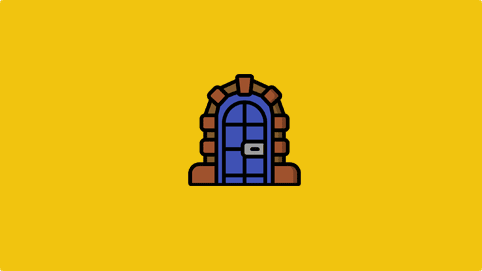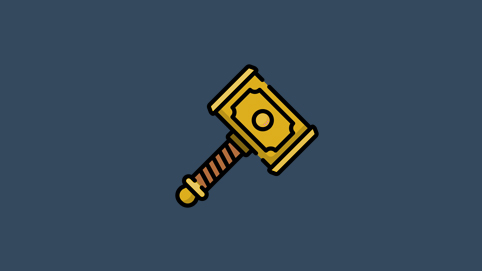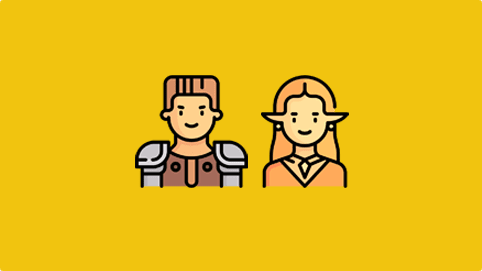Planets and Star System Generator Level 1 Level 1
Module description
** It may take 2-10 seconds for the website to load after you hit Generate. Sorry for the inconvenience.
This is the tool to create planets and solar systems for role playing games set in Science Fiction. It is designed to help masters of games like Traveller, Starfinder, Stars Without Number, Ultramodern5, Eclipse Phase, Dune Adventures, Star Trek Adventures, Alien RPG, Warhammer 40.000 or Star Wars RPG among others. This module contains many algorithms that will shape as realistically as possible a solar system. There is a 3% chance that there are anomalies (black holes, ion storms...) and a 1% chance that these are subspace anomalies (like temporal fractures). The image will show the complete solar system and in description you can find all the information related to each astronomical object.
It is important to emphasize that this module is random but mostly causal. This means that when choosing a type of star the types of planets orbiting it will depend on its age, luminosity, mass and size. In addition, rules have been added to try to approximate reality, such as the case of red stars (Type M) which are the most destructive to their planets. All the data concerning the characteristics of the planets have been taken from hypothesis of physics such as the Titius-Bode Law concerning the distance between planets, the formulas of rotation and translation or even the relationship between the fictitious planets compared to our Sun or planet Earth. Much emphasis has been placed on trying to provide the highest precision in the data shown.
If you want to know the complete methodology used you can visit this post. We want to thank Helianthus Games whose pixel art content has made it possible to illustrate all the randomly created content. This content is not official Star Trek or any other role-playing game, but an approximation for Game Masters based on this universe. This is not an official generator, just one inspired and compatible with Science Fiction role-playing games.
How does this module work?
Just choose the type of star you want and click on the "Generate" button. An image with the solar system and all its astronomical objects will be displayed. If you want to increase the chances of a habitable world appearing we have created a check for it. In the following we will give some basic information about all the possible descriptions you will find:
1. Stars: On the one hand, there is their "Type" that will depend mostly on their age, although there are singular cases. The youngest stars are usually the ones with more strength and white-blue-violet colors. As the fuel in their core is consumed, these stars become less luminous and turn yellow-orange-red. After this the red stars may enlarge in size and destroy the surrounding planets. Finally the stars collapse and can create a shock wave. Neutron stars are the remnants of what were once the big stars, since they are stars that ran out of fuel and gravity has compressed them to the maximum.
2. Planets: The youngest stars have not had time to form planets around them. If there are any, their origin is artificial, either by aliens or by being captured (stolen) from other nearby stars due to their stronger gravitational attraction. Planets are created following patterns, so the distance between them is not accidental. Depending on the zone where the planet originates, it will have different characteristics. The stars have 4 zones: Red Zone, Yellow Zone, Green Zone, Blue Zone and Black Zone. Planets in the red zone are easily engulfed by the star, while those in the black zone end up detaching from the system and traveling through deep space. In the Yellow zone are hostile and unstable planets; in the Green zone are planets with generally better conditions (Earth is located here), and in the Blue zone are cooler planets. All of them may harbor intelligent life but these are unlikely events.
3. Moons and Satellites: Planets may have natural satellites around them. Depending on the planet it may have more or less, just as their types also vary. If a moon gets too close to the planet it will fragment due to the gravitational encounter and turn into dust, creating a planetary ring as in the case of Saturn. Some satellites can also be captured while traveling through space. If they do not cause a catastrophic impact, they can be added to the gravity fields.
4. Asteroids: These are rocky celestial bodies that are generally smaller than planets. In this module there are several possibilities: Asteroid belt (created as a result of Jupiter-like gas giants and their influence destroying large worlds), Kuiper belt (which is similar to an asteroid belt but much wider and more massive to the point that it can harbor dwarf planets like Pluto); and finally, the Oort Cloud which is a spherical cloud that covers solar systems , almost a light year away from them and has hundreds of billions of orbiting objects. Comets such as Halley's Comet have their origin here.
5. Anomalies: Stars are found within sectors of a galaxy. The closer we get to the nucleus of a galaxy the larger the cluster of stars. Galaxies with more than 200 billion stars are found within the universe, and there are approximately at least 2 trillion galaxies in the observable sky. Physics cannot yet explain all phenomena and it is not little known that there are anomalies such as black holes. This module incorporates a 3% chance of strange events and a 1% chance of a dissformity occurring in subspace and its dimensions.
The distances used are kilometers (km), astronomical units (UA) and light years. The different scales are used for different situations. In planetary environments the kilometer is very practical. To make measurements between planets, the AU is used, which is equivalent to the distance between the earth-sun (approximately 150 million kilometers). This measurement is very useful because the Earth is 1 AU from the Sun. If a planet is 0.5 UA it means that it is twice as close to its star as the Earth is to the Sun. Likewise a planet at 3 UAmeans that it is 3 times farther from its star than the Sun is from the Earth. Finally the light year is used for length measurements between star systems and galaxies. A light year is equivalent to approximately 63,000 UA and 9 billion million million kilometers.
The characteristics of the planets are as follows:
- Planet names: Each planet has a randomly generated name. These names can contain Greek letters, suffixes and prefixes. The names of the stars are also randomly generated so no two are alike.
- Type: We have used the Star Trek nomenclature because we find it the most comfortable to use. This is divided into many classes but the most important are Class D (Rocky), Class F (Dry), Class G (Icy), Class H (Dry terraformable like Mars), Class J (gas giants), Class K (Venus-like), Class L (temperate Earth-like but more exotic), Class M (Earth-like), Class T (gas giants with rings) and Class Y (hell worlds).
- Distance to its star: Reflected in astronomical units is the distance to its "Sun". The closer it is, the less time it will take to go around it, which modifies the duration of its seasons. If it has an atmosphere, this directly influences its temperature, precipitation, winds, etc. The most distant worlds usually have very low temperatures, although there are exceptions due to the nature of the planet or the heat of its core.
- Mass, density and diameter: These data can be used by the game master to make calculations or to see the effects that different events would have. For each planet we have tried to be as realistic as possible according to the nature and actual observation of space. Having a lot of mass does not mean that it is bigger or smaller, but it does influence the gravitational attraction capacity. Density varies depending on the bulk materials. Rocky worlds usually have the density of ice, silica or heavy metals.
- Gravity: Gravity depends on the diameter and density of the planet. This is one of the most important factors, since for example, humans can survive up to a maximum of 3G but as a general rule will not be able to settle in gravities higher than 1.25G as it would bring disease and hardship. This may vary by +/- 25% depending on the species.
- Temperature: This represents the average temperature of the planet, so it does not mean that in all parts of the planet it is the same or that it is always like this. The difference between the warmest month and the coldest month will depend on the distance to the planet's equator, but as a general rule it will be +/- 40ºC in the greater of its extremes. Therefore, even if a planet has an average temperature of -17ºC, if it is of a temperate type, more palatable temperatures could be expected in some places and at some times of the year, even life. The lowest temperature is -273ºC which is considered absolute zero.
- Movements: It is composed of the two most basic motions: translation and rotation. This determines how long it takes to go around its star (365 days in the case of the earth which is 1 calendar year) and how long it takes to rotate around itself (24 hours on earth giving 12 hours of day and 12 hours of darkness). In environments where there is no atmosphere it is very important to take this into account, since the day and night temperature can vary up to 120ºC, going from burning in the sunlight to freezing in the shade.
- Atmosphere: Depending on gravity, distance from the star and the type of planet, it may or may not have an atmosphere. To find life as we know it, there would have to be oxygen, although the first forms of life also exist in environments composed of hydrogen, carbon dioxide and carbon monoxide. Hydrogen is usually lost over time in space and volcanic activity throws new gases into the atmosphere such as nitrogen and water. Over the years a more stable atmosphere is formed and biological compounds precursors of life may appear. Other atmospheres are useful as energy resources as in the case of Jovian worlds.
- Seismicity: Tectonic activity can increase the global temperature of the planet. The seismicity of a planet depends basically on how young it is (younger the more active); diameter, mass, density and how close it is to its star and other important astronomical objects such as the Oort Node. If the rotational motion is fast, if there is no atmosphere or if it has large moons around it also affects seismicity, as well as the hydrosphere. Planets can be: Seismically inactive (or dead), Hot Spot (very localized earthquakes), Plastic (earthquakes with waves), Active or Very Active (volcanoes, earthquakes, tsunamis, constant tremors).
- Resources: This is an indicative point about what kind of natural resources could be exploited in these types of planets. It is generic so it is not specifically tailored to that world. It serves as inspiration for the Game Master.
- Type of Life: If we are looking for life as we know it we will need the world to resemble planet Earth. Depending on the age of the planet its species may evolve more or less, to the point of creating civilizations. Intelligent races are the pinnacle of the evolution of life on these planets, with different races and species living together. Beyond the creatures are viruses, bacteria and prebiotic molecules that can appear on somewhat more complex and unstable worlds. Life forms can also be energetic or based on other compounds such as Fluorine, Sulfur and other compounds derived from Carbon. Even life forms based on liquid helium or non-corporeal entities or from other dimensions.
- Satellites and Moons: Planets can have objects orbiting around it. Here we specify the most important ones, leaving aside minor artificial satellites, small asteroids or space debris. Some satellites may be similar to the Earth or even have developed intelligent life. The satellites have the same importance as the planets, since, for example, Jupiter has several moons like Europa with a great interest for the human being, both for resources and habitability.






